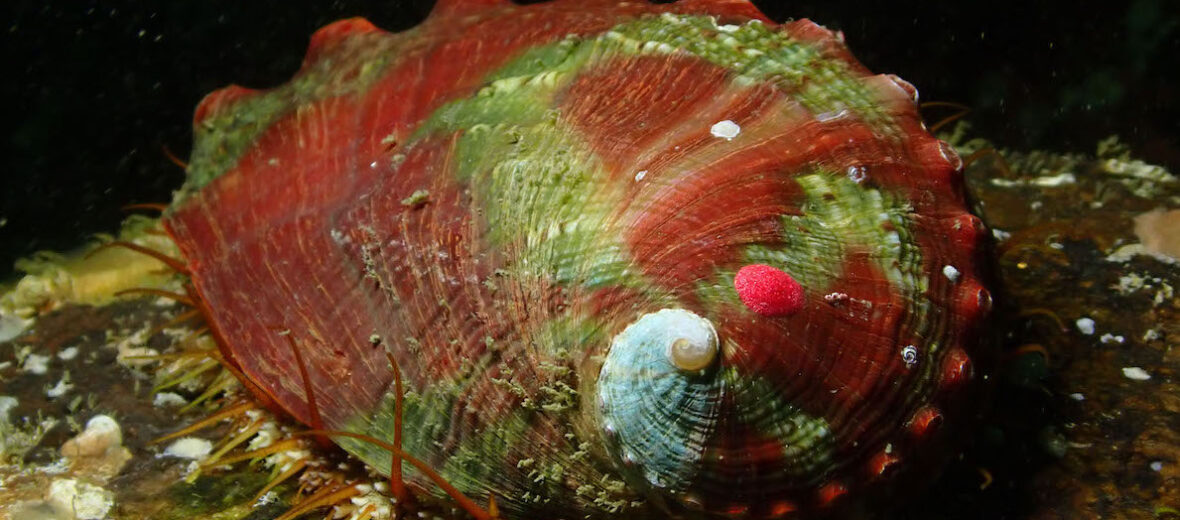
The abalone is a gastropod mollusk (snail) that inhabits tropical and temperate coastal waters off the coasts of Australia, New Zealand, Japan, South Africa, and North America. These sea snails have a rather bland and camouflaged outer shell yet a brilliant opalescent inner shell appearance. Most are listed as Least Concern by the IUCN, but some are listed as precariously as Critically Endangered.
First the Stats…
Scientific name: Haliotis
Weight: Up to 12.34 ounces
Length: Up to 1 foot
Lifespan: Up to 40 years
Now on to the Facts!
1.) There are 35 known species and 18 subspecies of abalone.
2.) The holes on the outer edge of their shell have several purposes: they release eggs or sperm, they discharge waste, and they also allow water to flow out after passing through their gill chamber.
3.) Just like other archaeogastropods, they possess a heart and a cerebral ganglion which provides nerves to sensory organs. Yet they possess no brains or even any ability to coagulate their blood, if cut.
4.) These critters graze on algae, which helps keep it in check.
5.) Their inner shell is made of nacre, or mother-of-pearl. This is a modified type of calcium carbonate.
But wait, there’s more on the abalone!
6.) Abalones eat via a radula, which is a tongue-like band that has numerous small teeth.
7.) An 8 inch abalone can release up to 11 million eggs at a time!
Did you know…?
Their shells are alleged to be upwards of 3,000 times stronger than calcium carbonate!
8.) An abalone’s blood is blue-green.
9.) They produce pearls by secreting a sort of shell over various parasites or particles of gravel that lodge in their flesh and cause irritation. Some farmers, looking to harvest pearls at a later date, will seed abalones.
10.) These sea snails can take up to 8 years to grow to adulthood.
But wait, there’s still more on the abalone!
11.) If a sea star attempts to feast on one, they will shake their shell violently until the predator is dislodged and then they will scoot away, as fast as one can.
12.) Other names for these creatures are: ear shells, sea ears, perlemoen, muttonfish, muttonshells, ormer, and pāua.
13.) These oceanic mollusks are plagued by ganglioneuritis and polychaetes pests that attack and kill them. Plus they are hemophiliacs as their blood doesn’t clot at all.
14.) Crabs, fish, lobsters, octopuses, sea stars, predatory snails, and humans all prey on juveniles and adults. The eggs and larvae are eating by filter feeding creatures.
15.) In California, you will face heavy fines and jail time for poaching these amazing aquatic mollusks.
Now a Short Abalone Video!
Be sure to share & comment below! Also, check out the Critter Science YouTube channel. Videos added frequently!
Want to suggest a critter for me to write about? Let me know here.



